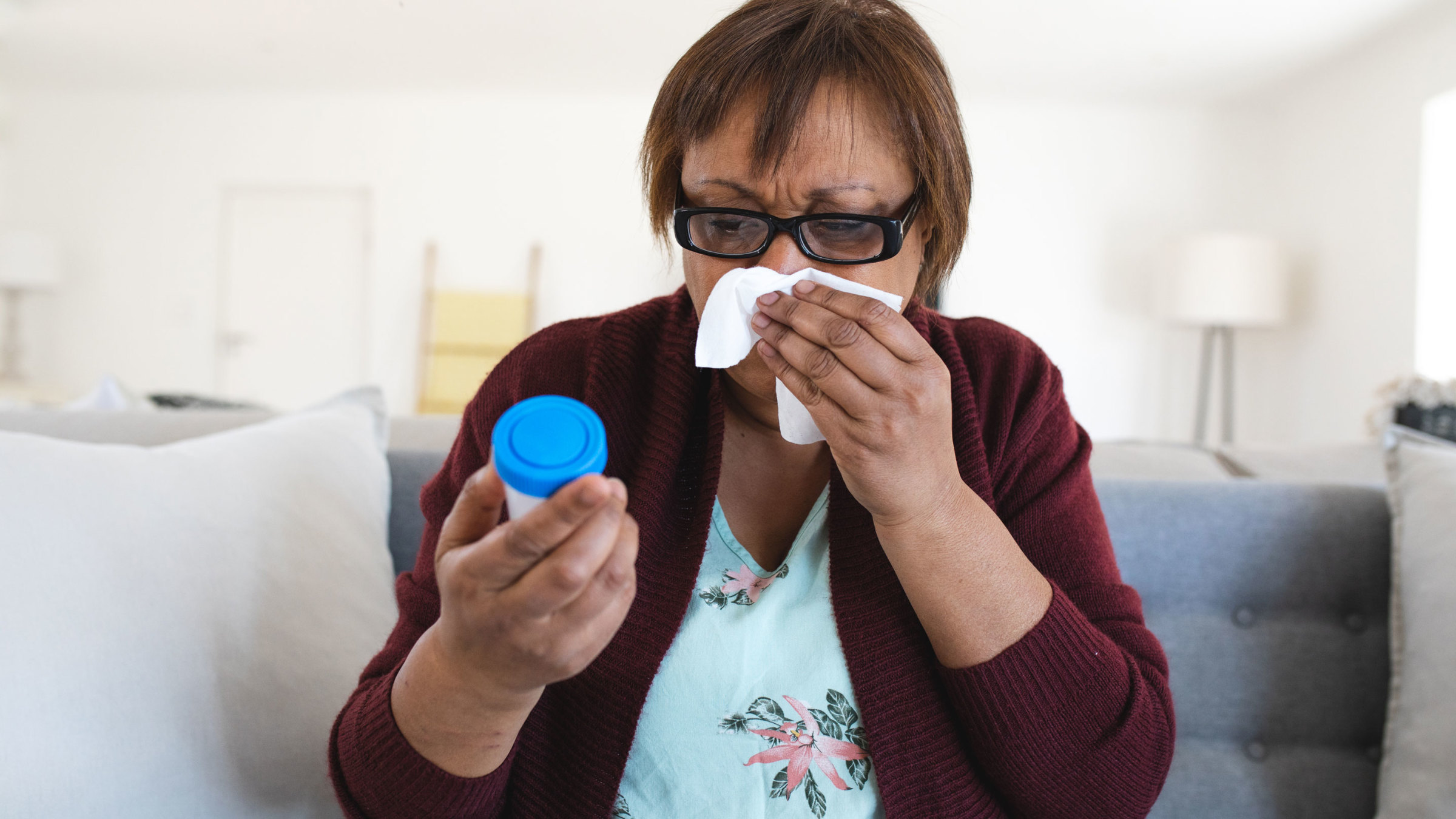
Greater Pharmacist Prescribing Authority Improves Patient Access: A Case Study on PrEP for HIV
Key takeaways:
Expanding pharmacist prescriber authority for HIV PrEP medications significantly increased PrEP use.
PrEP fills grew 24% after 1 year and 110% after 2 years in states that passed pharmacist prescriber policies for PrEP.
Over 37 million people live in an under-resourced area. Expanding pharmacist prescriber authority in these areas could boost access to healthcare.
Access savings to related medications

Several U.S. states, including California and Colorado, recently passed policies allowing pharmacists to prescribe and dispense medications. These policies were intended to improve patient access to healthcare, and they appear to be working.
According to new research from GoodRx, states that have expanded pharmacist prescribing power have seen substantially more fills for PrEP (pre-exposure prophylaxis), the HIV prevention pill. Increased PrEP use is critical for limiting HIV transmission and an overall win for public health.
This jump in fills suggests that pharmacists could play a major role in getting medications to patients who need them — especially those who live in areas that lack healthcare services.
PrEP fills rose after pharmacist prescriber policies were passed
Research suggests that patients see their pharmacists nearly 12 times more often than they see their primary care provider. This accessibility means that pharmacists could help to fill gaps in the healthcare system.
But the scope of a pharmacist's authority varies from state to state. A few states have passed policies allowing pharmacists to independently prescribe a wide range of drugs. However, other states only allow pharmacists to prescribe certain drugs such as birth control, naloxone, and HIV medications.
The GoodRx Research team wanted to know if increasing pharmacist prescribing power would improve patient accessibility. So we compared the annual fill rate index for PrEP medications over time in states that passed pharmacist prescriber policies to states that did not.
As shown in the figure above, PrEP fill trends appear to diverge after 2020. That’s when states began implementing policies that allowed pharmacists to prescribe PrEP. The index for PrEP medication use first ticked upward from 2020 through 2021, after Colorado and California changed state policies. It edged up again from 2021 through 2022, after Maine, Nevada, Oregon, and Virginia followed suit.
Meanwhile, PrEP fills remained relatively flat in states that didn’t pass policies expanding pharmacist authority.
These results suggest that pharmacists could have a big impact in HIV prevention and management. According to the CDC, only 25% of those eligible for PrEP are prescribed it. Many people who lack access to primary care providers or HIV clinics could potentially turn to pharmacists.
Digging deeper into the impact of pharmacist prescriber authority
While the trend is telling, other factors could be at play. These include differences in PrEP demand across states, as well as the introduction of Descovy in 2019 and emtricitabine/tenofovir (generic Truvada) at the end of 2020.
Knowing this, we wanted to dive deeper to understand the true impact of pharmacist prescriber policies. To do this, we used the differential timing of these policies in an “event study” framework to account for other factors that could have affected PrEP use but were unrelated to pharmacist prescriber authority. This helped us estimate the change in PrEP use that was actually caused by expanded pharmacist prescriber authority (see our methodology section for more details).
As the figure below shows, PrEP medication use — as measured by the PrEP fill rate index — significantly increased after pharmacist prescriber policies for PrEP went into effect. One year after the policies were implemented, the PrEP fill rate index was 0.05 percentage points higher or 24% higher than the average fill rate in the year the policies were passed. After 2 years, the PrEP fill rate index was 0.21 percentage points higher or 110% higher than in the year the policies were passed.
To further underscore the policies’ impact, it’s important to note that there was no effect on medication fills in the years prior to the policies’ implementation.
Our findings show that pharmacist prescriber policies can substantially increase access to important medications like PrEP even if the effect takes some time to ramp up.
The findings have ramifications for future state policies. Pharmacists in Colorado, California, Maine, Nevada, Oregon, and Virginia can currently prescribe PrEP to patients. But state governments in Maryland, Massachusetts, Minnesota, New York, and Illinois are all considering similar legislation.
Pharmacists could also increase access to other medications pending further state legislation. A few states already allow pharmacists to prescribe birth control, smoking cessation medications, and medications for specific conditions including asthma and diabetes. If these policies result in a lift in medication fills as we found with PrEP, more people could access the medications they need.
This expanded authority could bridge an important gap in areas where people lack access to primary care providers or other traditional prescribers of medication.
WHAT TO READ NEXT
How could expanding the role of pharmacists affect health equity?
We also wanted to see how many under-resourced areas could potentially benefit from expanded pharmacist prescriber authority. So we mapped all the U.S. counties that have sufficient pharmacy access but lack access to primary care providers and/or low-cost health clinics.
As shown in the map below, 20% of U.S. counties stand to gain from pharmacist prescriber authority. These counties contain over 37 million people. Adequate pharmacy access means that at least half of the county’s population lives no more than 15 minutes away from the closest pharmacy.
Many counties in the South, Southeast, and Midwest have adequate pharmacy access but inadequate access to primary care or health clinics. In these areas, patients may struggle to receive prescriptions due to health provider shortages or not enough health centers. A physician shortage threatens to make the lack of access in these areas worse.
Expanding pharmacist prescriber authority in these areas could be especially helpful. Patients could receive prescriptions from their pharmacist that would have been more difficult to get otherwise. In addition, people in these areas are more likely to face traditional barriers to healthcare such as lower income, limited internet access, and lack of insurance. With prescriber authority, pharmacists could help those facing structural barriers gain access to medications.
Summing it all up
Pharmacists play important roles in our healthcare system. They not only dispense medications, but they also provide health services and disease management.
GoodRx Research looked at prescriber authority for PrEP to gain a deeper understanding of how expanding a pharmacist's role could benefit patients. It’s clear that there is a measurable increase in PrEP use in states that implemented policies supporting prescriber authority. Authorizing pharmacists to prescribe Paxlovid during the COVID-19 pandemic is another recent example of how these policies can help.
State policymakers will determine how and if pharmacists will play a role in increasing access to important medications. But moving forward it's clear that expanded pharmacist prescriber authority, especially in underserved areas, should be a priority.
Co-contributors: Amanda Nguyen, PhD, Tori Marsh, Lauren Chase
Methodology
We utilized data from January 2014 through July 2022 on retail prescription fills from a nationally representative dataset. The PrEP annual fill rate index is calculated as total annual PrEP medication fills, divided by total annual fills for a fixed basket of prescription drugs. PrEP medications include Descovy, Truvada, and emtricitabine/tenofovir (generic Truvada). For the average annual fill rate index for states that did and did not pass pharmacist prescriber policies, we also adjust for quantity dispensed on each prescription.
The change in PrEP annual fill rate index due to pharmacist prescriber authority is estimated using an event study analysis of states that passed policies to allow pharmacists to prescribe PrEP compared to states that did not. Event study estimates are obtained by regressing state-level PrEP annual fill rate index on lead and lag dummy variables (indicating how many years before or after the year the policy was passed), with state and year fixed effects to account for state-level differences and national time trends in PrEP use. Confidence intervals were calculated using a significance level of 0.05 and robust standard errors clustered at the state level.
These estimates reflect the local average treatment effect of pharmacist prescriber authority on the treated states' PrEP fill rate index in each year after the policy was passed. The percent increase in PrEP fill rate index due to pharmacist prescriber authority is calculated as the event study coefficient in a given year after policy implementation, divided by the average PrEP fill rate index in the year the policy was implemented for treated states (0.19% on average for treated states in the year of policy implementation). The treated states and their year of policy implementation include: California (2020), Colorado (2020), Maine (2021), Nevada (2021), Oregon (2021), and Virginia (2021).
Data on access to pharmacies, primary care providers, and community health centers is sourced from a GoodRx study on healthcare deserts. Adequate pharmacy access is defined by at least half of the county population living no more than 15 minutes away from the nearest three pharmacies. Primary care desert counties are defined by the majority of the population living in a healthcare professional shortage area. Health clinic desert counties are defined by the majority of the population living over 20 minutes away from the nearest federally funded community health center.
Data on disease prevalence, smoking, and vaccination rates are sourced from County Health Rankings. HIV prevalence is measured for people 13 and older; diabetes prevalence is measured for people 20 and older; obesity prevalence and smoking rate are measured for people 18 and older; and flu vaccination rate is measured for Medicare enrollees.
References
Centers for Disease Control and Prevention NCHHSTP Newsroom. (2021). PrEP for HIV prevention in the U.S.
County Health Rankings and Roadmaps. (2022). Rankings data & documentation.
Illinois General Assembly. (2022). Bill status of HB4430.
Maryland General Assembly. (2022). SB0355.
Minnesota Legislature. (2022). Expand PrEP & PEP Access.
Nguyen, A., et al. (2021). Mapping healthcare deserts: 80% of the country lacks adequate access to healthcare. GoodRx Health.
Robeznieks, A. (2022). Doctor shortages are here—and they’ll get worse if we don’t act fast. American Medical Association.
Strand, M. et al. (2020). Community pharmacists’ contributions to disease management during the COVID-19 pandemic. Preventing Chronic Disease.
The 192nd General Court of the Commonwealth of Massachusetts. (2021). Bill S.1407.
The New York State Senate. (2021). Senate Bill S728.





